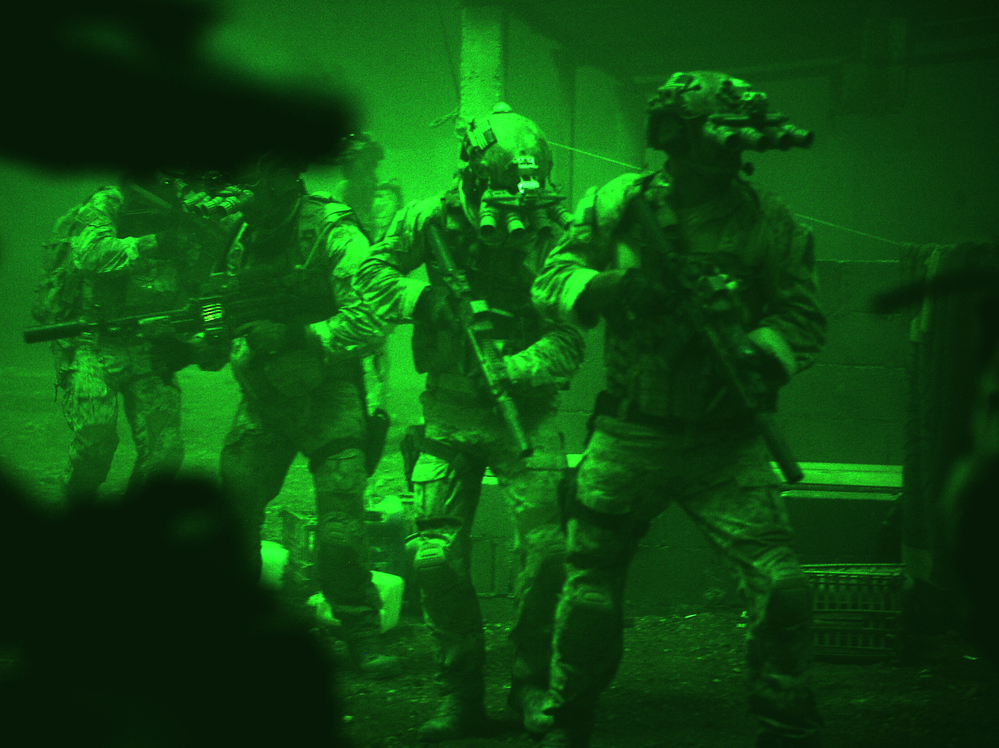
Director Kathryn Bigelow and screenwriter Mark Boal at the 83rd Annual Academy Awards.
Ethan Miller/Getty ImagesKathryn Bigelow became the first woman to take home the Oscar for best director for her film The Hurt Locker in 2010. Mark Boal walked away with a statue for writing the film, and the duo shared the honor of taking home the award for best picture later that evening.
Now they've returned with a new film, Zero Dark Thirty, which documents the search for Osama bin Laden following the Sept. 11, 2001, terrorist attacks. The film has already won critical acclaim and recognition; it was recently nominated for four Golden Globe Awards including best director, best screenplay and best motion picture.
Morning Edition's Renee Montagne speaks with Bigelow and Boal about creating a film that touches on a well-known story — and sensitive issues, including depictions of waterboarding.
Boal on the film's opening
"For us, the story begins with 9/11, so the question arose of how do you remind the audience of 9/11 without being gratuitous, without showing the imagery that I think has been played out to the point of becoming something other than it was. And the audio tracks, to us, seemed like an appropriate way of re-creating that moment, and then allowing us to begin our story of the intelligence hunt."
Bigelow on realizing a young woman would be at the center of the story
Seen through the greenish glow of night-vision goggles, Navy SEALs prepare to breach a locked door in Osama bin Laden's compound in Zero Dark Thirty.
Jonathan Olley/Sony Pictures Seen through the greenish glow of night-vision goggles, Navy SEALs prepare to breach a locked door in Osama bin Laden's compound in Zero Dark Thirty.Jonathan Olley/Sony Pictures
Seen through the greenish glow of night-vision goggles, Navy SEALs prepare to breach a locked door in Osama bin Laden's compound in Zero Dark Thirty.Jonathan Olley/Sony Pictures "Well, I think Mark was probably about a month to two months into his reporting, and he realized that there was one woman in particular that really captivated his interest. And so we began to talk about it, and ... as the material developed and he was writing it into a screenplay, realizing that she was probably the best conduit through whom we could tell this story."
On portraying "stomach-turning" scenes of torture
Boal: "This stuff didn't occur over tea and cookies at the Regency. There were some really brutal things done in the name of national security over the last 10 years. ... They also packed people in ice and froze them to death, but we didn't show that."
Bigelow: "One of our objectives was not to sanitize the past. But also [we wanted] to show that no single piece of information led to Osama bin Laden's compound."
Bigelow on replicating the compound
"We built it ground-up — three stories. Replicated even the tile on the floor, the bed frame, the rugs, the furniture in the rooms. All the passages were narrow and cluttered, but they were as they should be."
Bigelow on staging the raid scene at the film's climax
"I had a retired Navy SEAL who I worked with on the choreography of that assault, and ... I talked to him about the movement, and he said ... the way they'd been trained is to move like water, and to move with a kind of — obviously, a tremendous confidence, a tremendous assurance — but very methodically. And I think that really contributed to how the whole last act unfolds. Believe me, a pitch-black set with a hundred-member crew and 22 SEALs is — is an interesting experience in and of itself."
Bigelow on showing the daily lives of intelligence operatives
"I think it was important to humanize the hunt. I mean, there's a character in the movie — Jennifer Ehle — who says over a toast, you know, 'To big breaks and the little people who make them happen.' You know, these are people who have sacrificed a great deal, live in arduous conditions, risk their life in some cases for our safety. So I think it's an interesting portrait of dedication."
No comments:
Post a Comment